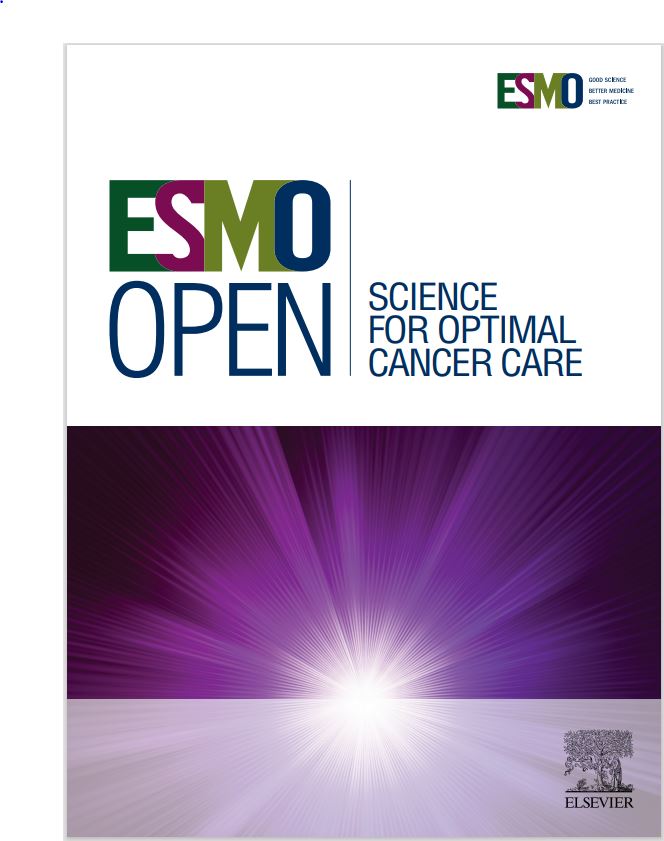Health networking on cancer in the European Union: a ‘green paper’ by the EU Joint Action on Networks of Expertise (JANE)
IF 7.1
2区 医学
Q1 ONCOLOGY
引用次数: 0
Abstract
Health networking is in principle a formidable instrument to address many challenges posed by cancer, one of the two most common and most lethal non-communicable chronic diseases. The European Union (EU)’s Beating Cancer Plan foresaw the addition of new health networks to the four already existing European Reference Networks on rare cancers: the Network of Comprehensive Cancer Centres and several networks of expertise (NoEs), which will be shortly deployed on items as complex and poor-prognosis cancers, palliative care, survivorship, personalised primary and secondary prevention, omic technologies, hi-tech medical resources, and cancers in adolescents and young adults. The community of experts of the EU Joint Action, due to build such NoEs, has drafted this ‘green paper’, incorporating 13 open questions, in an effort to foster discussion on some open questions about health networking on cancer in the EU. These affect highly diverse issues such as the following: how gaps in research into the instrument of health networking may be filled; which items lend themselves more to health networking in the EU; what degree of cooperation and harmonisation should be required of EU member states to best exploit health networking and give rise to European networks of national/regional networks; how the idea of subsidiarity may be best interpreted to support health networking in the context of EU treaties, which basically do not include health; how health networks should be funded and with what degree of cooperation between the EU and national levels; whether EU health networks should be shaped as legal entities or could give rise to secondary legal entities, also with a view to fundraising; how health networks should be best shaped to advance cancer research and how the EU regulatory system should be updated to exploit such impulse to health networks, in view of the EU General Data Protection Regulation and the new EU Health Data Space; how artificial intelligence can be exploited today within health networks and to what extent it will be able to overcome challenges such as the current lack of interoperability of electronic health records and the language barrier across the EU; and how health networks should involve patients and their groups, with regard to their formal role within EU health networks as well as their ability to have a say in items such as production of clinical practice guidelines, the design of investigator-driven clinical trials, EU regulatory decisions on medicines and devices, health service data governance, and identification of unmet needs.
求助全文
约1分钟内获得全文
求助全文
来源期刊

ESMO Open
Medicine-Oncology
CiteScore
11.70
自引率
2.70%
发文量
255
审稿时长
10 weeks
期刊介绍:
ESMO Open is the online-only, open access journal of the European Society for Medical Oncology (ESMO). It is a peer-reviewed publication dedicated to sharing high-quality medical research and educational materials from various fields of oncology. The journal specifically focuses on showcasing innovative clinical and translational cancer research.
ESMO Open aims to publish a wide range of research articles covering all aspects of oncology, including experimental studies, translational research, diagnostic advancements, and therapeutic approaches. The content of the journal includes original research articles, insightful reviews, thought-provoking editorials, and correspondence. Moreover, the journal warmly welcomes the submission of phase I trials and meta-analyses. It also showcases reviews from significant ESMO conferences and meetings, as well as publishes important position statements on behalf of ESMO.
Overall, ESMO Open offers a platform for scientists, clinicians, and researchers in the field of oncology to share their valuable insights and contribute to advancing the understanding and treatment of cancer. The journal serves as a source of up-to-date information and fosters collaboration within the oncology community.
 求助内容:
求助内容: 应助结果提醒方式:
应助结果提醒方式:


